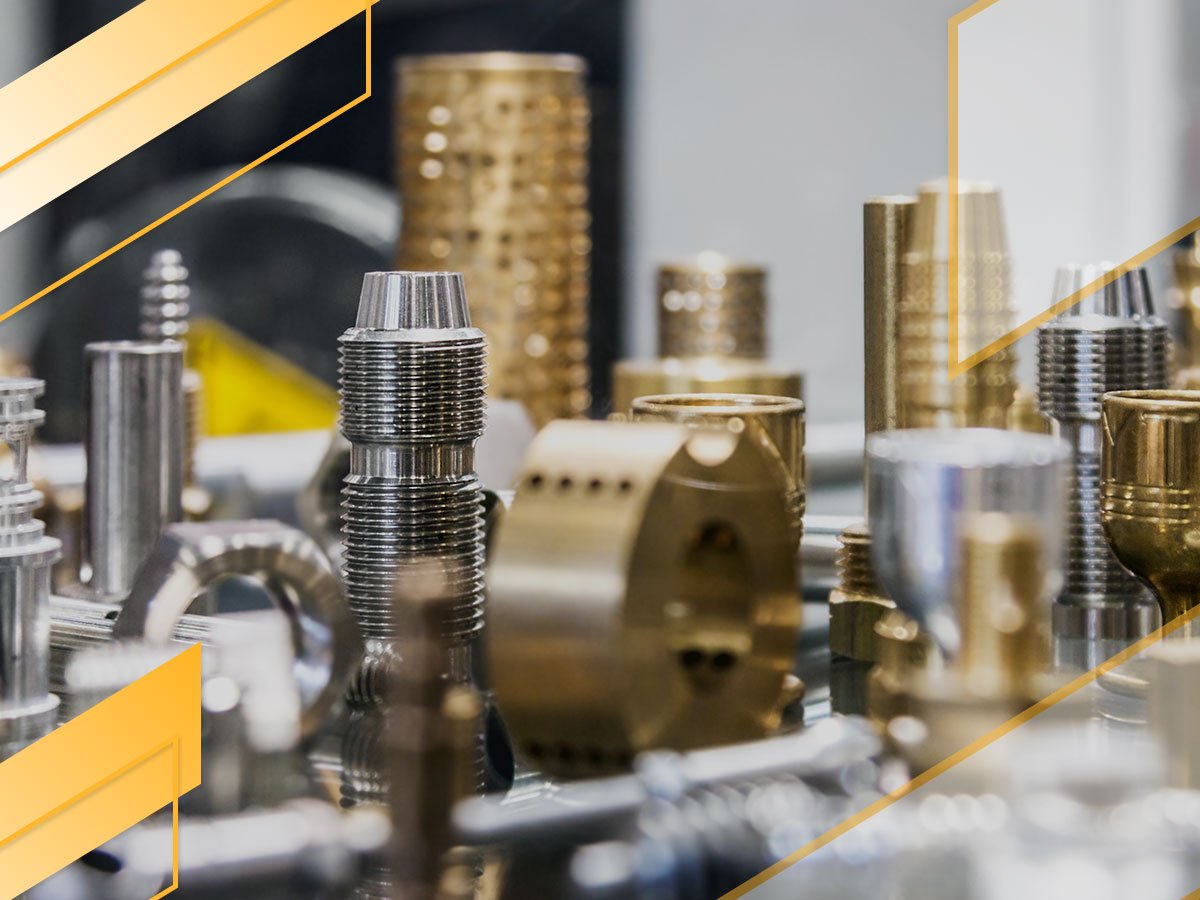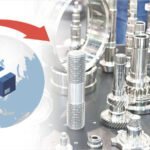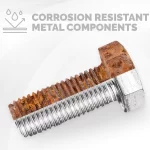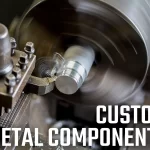The most common type of metal surface finishes for the high-quality components!

Metal is ubiquitous today, and you can find it anywhere. From little gadgets to huge machinery, furniture, electronics items, and vehicles, everything is the end component of metal.
When you are looking for some quality custom metal components for your project, you must consider all their characteristics, such as their material of construction, performance in various environments, and durability. However, the last two factors depend on the material and the type of surface finishing used. The finishing on the metal components helps improve their performance and lifespan. The surface finishing is primarily for corrosion resistance of metal components and may also be for thread lubrication and, in many instances. There are several types of surface finishing and coating available in the market.
This post discusses several common surface finishings that you can consider while buying metal components for your industrial, commercial, or personal uses.
The Importance of metal surface finishes
Quality is essential for any product selection. When it involves metal parts, products, or components, quality is defined by durability and resilience. Clients want metal products that may last! Because metal components connect or combine elements, structural integrity needs to employ the correct type. Similarly, appropriate surface finishing makes sure the longest lifespan for your metal components by providing a level of protection for the metal underneath.
In addition, damaged or rusted metal parts or products may be dangerous and costly to interchange. Hence, it is crucial that the correct reasonable surface finishing is applied. Manufacturers of metal components depend upon the results of salt spray testing to understand the corrosion resistance of metal components coating. The more hours the salt aerosol container is applied to a coating before oxidation or rust occurs, the higher the coating.
Proving an appropriate surface finish for metal components is a crucial last step in the manufacturing process. It improves the aesthetic appeal of the components and provides extra durability and protection to them. The step is usually used for medical-grade and pharmaceutical components that need to function in clean environments. Different metal components manufacturing companies use different finish options to ensure the beautiful appearance of the parts.
Let’s take a closer look at the most common methods of surface treatment and considerations to ensure the optimum end metal components.
- Anodizing: A finishing process in which a thick oxide layer is added to aluminium to reduce its rust and wear. It protects metal components from the weather and provides electrical insulation at the same time. Various anodizing options are available, including clear anodizing and color anodizing.
- Chromate Surface finishing: It is a chemical treatment that passivates metal to boost its corrosion resistance and electrical conductivity.
- Powder Surface finishing: It includes the application of dry powder (usually made from thermoplastics) electrostatically on the metal components to create a strong finish that makes metals long-lasting.
- Geomet: Geomet is a water-based high-performance thin layer zinc flake anti-corrosion system, which is none embrittling and is available in several grades depending upon the application need. Corrosion performance of the Geomet product range will depend upon specification, surface finishing thickness, surface preparation, and any topcoat applied. All metal components manufacturers worldwide has approved Geomet.
- E-surface finishing: Also, famous as electrophoretic coating, E-surface finishing involves the application of a thin layer of epoxy paint to the metal surface. The surface finishing is applied along with an electric current to make the surface finishing particle deposit perfectly on the metal’s surface.
- Electroless Nickel: Electroless nickel plating is an auto-catalytic reaction used to deposit a surface finish of nickel on a substrate. The solution does not require an electric current to form a deposit, unlike electroplating. As a result of this plating technique, corrosion and wear can be prevented. Compared to electroplating, electroless nickel plating has several advantages.
- Zinc Surface finishing: Many manufacturers of metal components apply zinc surface finishing in two ways – electrolysis or acid zinc. The latter one is metal products but does not always provide a uniform surface finishing, and the former is slower but provides a more uniform surface finishing. The coating prevents corrosion and impacts on metal parts.
- Galvanized Dipped: It involves dipping the metal products into molten zinc to build a strong layer of tightly bonded surface finishing. It prevents metal components from corrosion and is used for automotive and machinery.
- Passivation: By exposing metals like stainless steel to an acid solution, it is possible to extract free iron from their surfaces. Surfaces become more corrosion-resistant when it changes the surface’s reactivity.
- Cadmium: Formerly a popular electroplated or mechanically applied finish, looking like but giving slightly better protection than zinc and providing increased lubricity; also, chromate converted. Due to its toxicity and environmental unacceptability, it is rarely used today. Most often, it is specified through habit, error, or ignorance, and it may be confused with zinc if it is specified.
- Gray Phosphate: This is another important surface finish that is designed to improve the lifespan of metal components. However, this type of surface finishing is not recommended for conditions where there is an elevated risk of corrosion.
- Ceramic Coated: Ceramic surface finishings are not as resistant to corrosion as stainless steel, but they are often used in marine applications as they do provide protection against saltwater spray. These surface finishings are often designed to pass 500- and 1,000- hour salt spray tests.
- Hot Dip Galvanizing: Hot dip galvanizing will allow much heavier surface finishings, the normal commercial surface finishing is approximately 50 microns (µm), which necessitates the over-tapping of the mating thread, and metal components should be as strong as possible to avoid serious compromises in strength. As opposed to electroplating, the deposits are concentrated at the thread roots and corners.
- Dacromet: The finishing process combines zinc and aluminium flakes with a binder for cold-dipped or sprays applications.
Still unsure what metal components surface finishing to use?
Each of the surface finish of metal components listed above is designed to improve overall performance and protection. Although, determining which surface finishing is best depends on its application and corrosion resistance level. Selecting the wrong surface finishing can negatively affect the performance of your metal components, so get in touch with an industry expert like Teron Metal Components. Our experienced team is always ready to help you select the right materials for your next metal components project. Contact us today!



